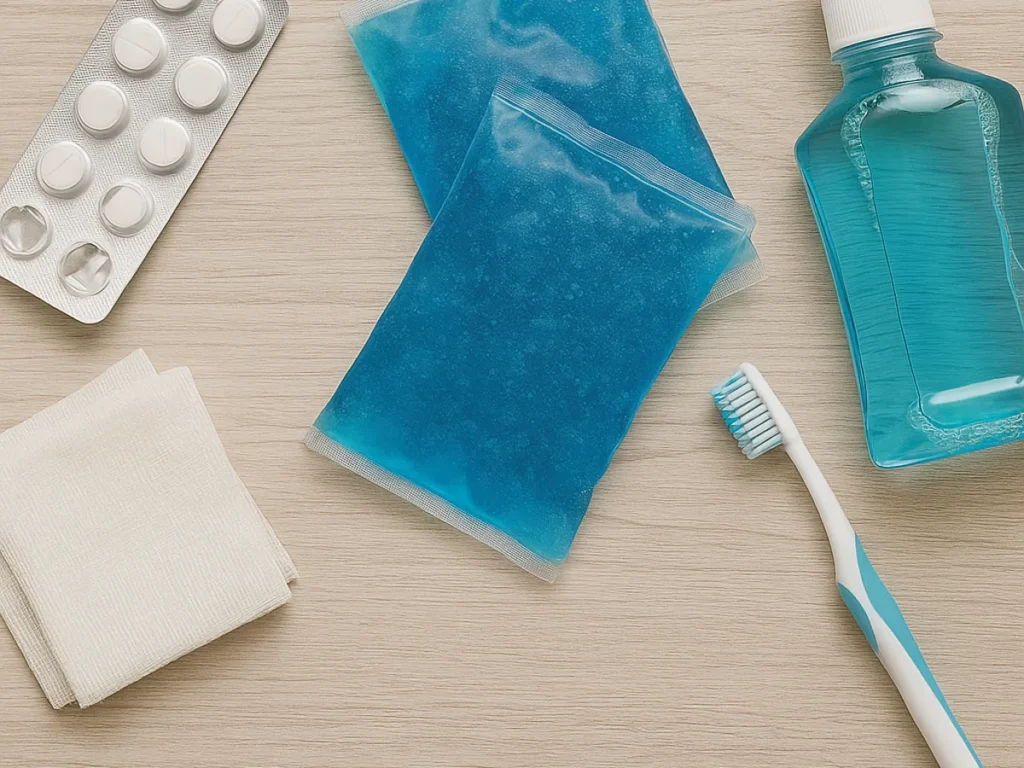Having your wisdom teeth removed can be a daunting experience, but understanding the recovery process can ease your worries. Knowing what to expect and how to care for yourself post-surgery can significantly impact your healing journey. In this article, we’ll walk you through the recovery timeline, offer tips for post-op wisdom teeth care, and discuss potential complications to watch for, ensuring a smoother recovery process.

How Long Does Recovery Take?
The recovery timeline for wisdom teeth removal varies for each individual, but most people can expect a similar healing process. While the timeline can differ based on factors like age, health, and the complexity of the extraction, a general framework can be helpful. Here’s a detailed overview of what to expect during your recovery:
Day of Surgery
Immediately following the surgery, you’ll experience numbness and swelling after wisdom teeth removal due to local anesthesia. This is a critical time to rest and allow your body to begin the healing process. Avoid strenuous activity, stick to a soft diet, and refrain from using a straw to prevent a dry socket.
Your oral surgeon may provide specific instructions, such as biting down on gauze to control bleeding. The effects of anesthesia may linger, so have someone drive you home and help with basic needs. Stay hydrated, but avoid hot beverages that might disturb the healing site.
First 72 Hours
During this period, swelling after wisdom teeth removal and discomfort may peak. Some bruising around the jaw, neck, or cheeks is also normal. Continue with soft foods and take prescribed pain medication as directed.
Use cold compresses on the cheeks to reduce inflammation. Avoid aggressive rinsing or spitting, which can dislodge the blood clot at the surgical site and lead to complications.
Wisdom Teeth Healing Stages: Week-by-Week Breakdown
Days 4–7
By now, the swelling and pain should begin to subside. You might still feel some discomfort and limited jaw movement. Continue following all care instructions, especially when it comes to hygiene and diet.
Avoid smoking and maintain a gentle oral hygiene routine. You may be able to introduce slightly firmer foods as tolerated.
Week 2
Most of the swelling should be gone. Minor tenderness may persist, but you’ll start to feel more like yourself. This is typically when people can return to normal eating habits—just avoid anything too hard or crunchy.
Oral hygiene remains a top priority. Gentle brushing and saltwater rinses help maintain cleanliness and prevent infection.
Week 3–4
By the end of the first month, most people are nearly or completely healed. Some sensitivity may remain, but normal function should be restored. A follow-up with your oral surgeon ensures that healing is progressing properly and gives you a chance to address any concerns.
Tips for Effective Post-Op Wisdom Teeth Care
Taking care of yourself after wisdom teeth removal is crucial to a smooth recovery. Here are some essential tips:
- Apply Ice Packs: Use ice for 20 minutes at a time during the first 48 hours to reduce swelling.
- Take Pain Medication: Follow your dentist’s instructions to manage discomfort effectively.
- Elevate Your Head: Keep your head elevated to minimize swelling.
- Rinse Gently: Saltwater rinses keep the mouth clean and reduce bacteria.
- Brush Carefully: Use a soft-bristled toothbrush and avoid the surgical site.
- Eat Soft Foods: Stick to easy-to-chew foods like yogurt, applesauce, and mashed potatoes.
- Stay Hydrated: Drink water regularly, but avoid straws.

Wisdom Teeth Removal Side Effects and What’s Normal
While most recoveries are smooth, it’s important to recognize common wisdom teeth removal side effects:
- Minor bleeding for the first few hours
- Swelling and bruising of the cheeks or jaw
- Stiffness or limited jaw movement
- Mild pain or discomfort, especially during the first week
These side effects are usually temporary and manageable with medication and rest.
Dry Socket Symptoms to Watch For
A dry socket is one of the most common complications after wisdom teeth extraction. It occurs when the blood clot that forms at the site becomes dislodged or fails to develop properly.
Dry socket symptoms include:
- Intense pain that radiates to the ear or eye
- A foul taste or bad breath
- An empty-looking socket at the extraction site
If you suspect a dry socket, contact your dentist immediately for treatment.
Signs of Infection After Wisdom Teeth Removal
While infections are uncommon, it’s vital to catch early signs of infection after wisdom teeth removal:
- Fever or chills
- Persistent or worsening swelling
- Pus or drainage from the site
- Severe or increasing pain
- Redness or warmth in the jaw area
Prompt treatment may include antibiotics or additional cleaning of the area. Keeping your mouth clean and following all post-op instructions can greatly reduce the risk of infection.
Managing Pain and Discomfort
Pain is expected, but manageable. Here are some ways to make your recovery more comfortable:
- Cold Compresses: Help with both swelling and pain.
- Saltwater Rinses: Keep the site clean and soothe sore gums.
- Medication Management: Stay on schedule to avoid pain flare-ups.
Final Thoughts on Healing After Wisdom Teeth Removal
Recovering from wisdom teeth removal requires time, care, and attention to detail. By understanding the wisdom teeth healing stages, following instructions for post-op wisdom teeth care, and knowing how to identify dry socket symptoms or signs of infection after wisdom teeth removal, you can ensure a smooth and healthy recovery.
When in doubt, reach out to your dentist or oral surgeon. Your commitment to proper care makes all the difference in achieving a full recovery and maintaining long-term oral health.



